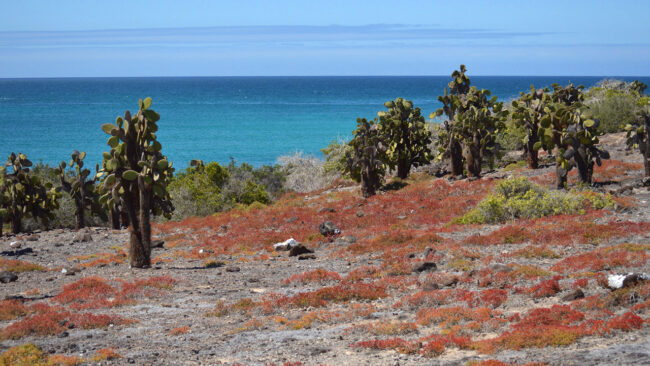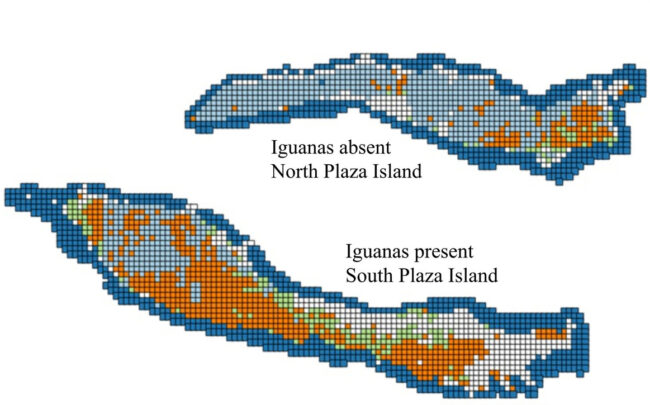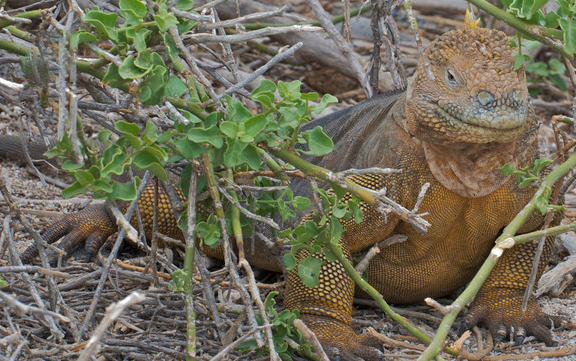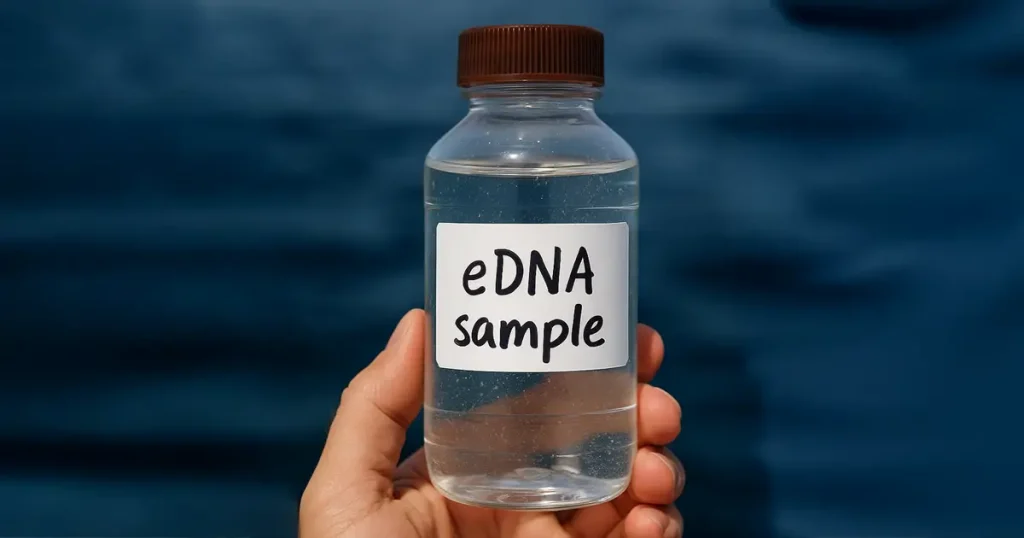Saving Iguanas to Save Galápagos: Land Iguanas as Ecosystem Engineers
by Aaron Provencio
Galápagos Conservancy’s Vice President of Science and Conservation Dr. James Gibbs and Director of Conservation recently published a new paper, “Galápagos land iguanas as ecosystem engineers,” in the Peer J Journal of Life and Environment. The publication outlines new research conducted on the impacts that Land Iguanas have on the ecosystems around them, impacts which further validate our significant investment in land iguana conservation. Read more below:
Galápagos is home to many spectacular reptiles found nowhere else on Earth, including its famous Pink, Yellow, and Pallid Land Iguanas. For decades, populations of these species have suffered from hunting and habitat destruction caused by invasive species. The Pink Land Iguana is on the brink of extinction, the Yellow Land Iguana is depleted but slowly recovering, and the Pallid Land Iguana has a small but secure and growing population on the one island where it lives, Santa Fe, thanks to the conservation work of the Galápagos National Park Directorate.
Located directly off the Eastern coast of Santa Cruz Island, North and South Plaza Islands are separated by a narrow 200-meter-wide band of water. Aside from North Plaza’s more precipitous cliffs, the two islands are nearly identical in size, environmental conditions, and vertebrate faunal biodiversity. But there is one key difference.
Only South Plaza Island is inhabited by Land Iguanas.
This fact may seem insignificant, but to James Gibbs and Wacho Tapia, North and South Plaza Islands offer an accidental experiment to study the impacts that herbivorous plant-eating Land Iguanas have on the environment around them.
It is widely understood that large herbivores — through their dietary habits, seed dispersal, and nutrient cycling — have a significant impact on their ecosystems. On the larger islands of the Archipelago, Giant Tortoises play the role of ecosystem engineers, shaping and modifying the habitat around them in a way that is beneficial to the entire web of life in which they exist. But until now, nobody has ever before tested the theory that Land Iguanas fill the same role.

Using an “electric-powered, hand-launched octocopter of [their] own design,” (Tapia, Gibbs 2022) the researchers were able to capture aerial images of the two islands with a resolution high enough to explore each square centimeter. The imagery’s detail made it possible to count crabs on the shore, see the toes on the iguanas, and view the flowers on every cactus. The aim of these pictures was to examine the unique plant cover composition of each island. What these images showed confirmed what both Gibbs and Tapia had expected…
On South Plaza Island, in the presence of Land Iguanas, there was significantly less woody plant cover, and a much larger presence of seasonal grasses. Additionally, the Opuntia cactuses (a favorite snack of the herbivorous Iguanas) of South Plaza grew in a manner that was far less clumped than their counterparts on North Plaza. This suggested that, by consuming the fallen cladodes of the cactus before it could root, Iguanas were preventing the vegetative reproduction that occurs when a cactus drops a segment onto fertile ground. Additionally, the Iguanas’ voracious consumption of the juicy Opuntia fruits means that the Iguanas themselves are acting as a convenient transport for the cactus seeds, carrying them across the island in their digestive system before *ahem* depositing these seeds in nutrient-rich piles of “fertilizer” far away from their source.

Gibbs and Tapia also observed that the devegetation of South Plaza seemed to attract many more Sea Lions than were present on North. These large marine mammals, whose size prevented them from navigating through thick and woody vegetation, were likely taking advantage of easier access to the island’s warm interior to bask and dry off. The huge increase in Sea Lion traffic also started to change the vegetation profoundly, an example of one animal – the Iguana – starting a cascade of changes that could eventually lead to these two geologically identical islands developing different vegetation communities that attract different species.
At Galápagos Conservancy, we pride ourselves on working at an “ecosystem scale.” We recognize that all ecosystems in Galápagos operate as a complex and interconnected system, one which functions most effectively if most or all of its parts are intact. What the Land Iguanas of South Plaza Island have demonstrated is that Land Iguanas, just like their larger counterparts the Giant Tortoises, play a significant and impactful role as ecosystem engineers.
What this means is that our ongoing projects to protect and restore populations of Land Iguanas — like the critically endangered Pink Land Iguanas of Wolf Volcano — serves a larger purpose. Investing in these specific species is not simply done for the sake of preserving a singular population. Instead, it is an investment in preserving and restoring the complex machinery of the larger Galápagos ecosystem.

This study provides conclusive evidence that Land Iguanas, together with Giant Tortoises, are critical in shaping habitats across Galápagos. As ecosystem engineers, the value of Iguanas in helping maintain ecosystems for a wealth of other endemic biodiversity of Galápagos adds an even greater justification for the urgent need to lead their conservation and recovery across the Archipelago. Our hope is that recovering and healthy populations of all Land Iguana and Giant Tortoise species will benefit all native plants and animals and serve as a critical tool and ally in our ongoing mission to protect and restore the Galápagos Archipelago.
Read the full publication here.



